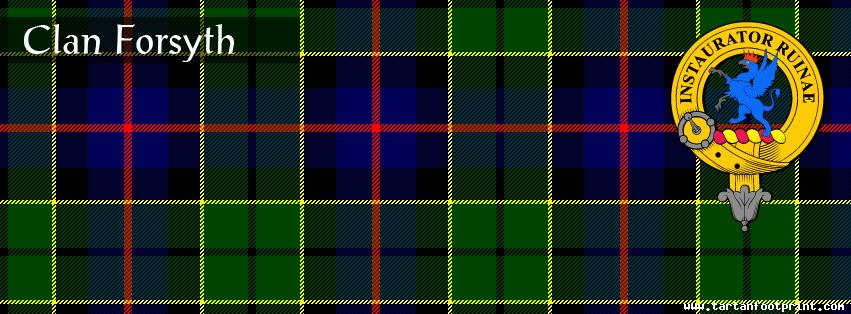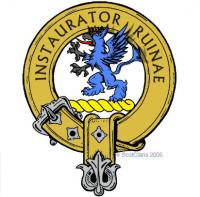
Clan Forsyth
The first recorded person of the name was William de Firsith on the Ragman Roll in Berwick on the 28th August 1296. Much of the records of Clan Forsyth were destroyed by Oliver Cromwell in the Civil War, therefore little is known.
In the 14th century during the Wars of Scottish Independence Robert de Forsyth received lands from King Robert I of Scotland. Roberts de Forsyth's son called Osbet Forsyth led the clan against the English at the Battle of Bannockburn in 1314. In 1364 the accounts of the 'Customers' of Stirling were rendered by Fersith the Clerk who was probably Robert's brother and who was granted £100.95 per annum from the lands of the Polmaise Marischal by Robert II.
In 1418 Robert Forsyth renderd the accounts of the Burgh of Stirling. In 1432 his son who was also called Robert became Burgess of Stirling and a Baille in 1470. Duncan Forsyth and David Forsyth became Burgesses in 1497 and descendants of the family settled in Stirling and held civic office for centuries. In 1488 David Forsyth the now Burgess of Stirling bought the land of the Dykes also known as Hallhill which is near Strathaven near Lanarkshire. The castle there had fallen into ruin but it was not demolished until 1828.
In the 16th century the Clan Forsyth led by Alexander Forsyth fought against the English at the Battle of Flodden Field in 1513 where Alexander was slain. Alexander's grandson James Forsyth married Elizabeth Leslie in around 1520. Elizabeth was the granddaughter of George Leslie who was the Chief of Clan Leslie and the 4th Earl of Rothes. Elizabeth was also the great granddaughter of King James III of Scotland.
In 1540 the family left Dykes and moved to Inchnoch Castle in Monkland which was also in Lanarkshire.
In 1621 William Forsyth had become a member of Forres in the Scottish Parliament.








